
This webpage includes information and images about the Constitutional Convention
- Subject:
- History
- Social Science
- Material Type:
- Reading
- Provider:
- ConstitutionFacts.com
- Date Added:
- 07/22/2024

This webpage includes information and images about the Constitutional Convention
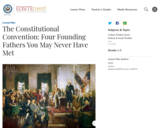
Witness the unfolding drama of the Constitutional Convention and the contributions of those whom we have come to know as the Founding Fathers. In this lesson, students will become familiar with four important, but relatively unknown, contributors to the U.S. Constitution Convention: Oliver Ellsworth, Alexander Hamilton, William Paterson, and Edmund Randolph.
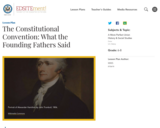
To what shared principles did the Founding Fathers appeal as they struggled to reach a compromise in the Constitutional Convention? In this lesson, students will learn how the Founding Fathers debated then resolved their differences in the Constitution. Learn through their own words how the Founding Fathers created"a model of cooperative statesmanship and the art of compromise."
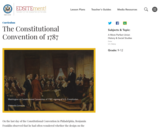
The delegates at the 1787 Convention faced a challenge as arduous as those who worked throughout the 1780s to initiate reforms to the American political system. In this unit, students will examine the roles that key American founders played in creating the Constitution, and the challenges they faced in the process.

This document is a glossary of words, phrases, and concepts used in the United States Constitution. Note that some words are defined only as they apply to the Constitution itself. The page does have advertisements as well, so it is best used as a teacher resource.

This resource includes a reading and discussion questions about the U.S. Constitution and slavery. Access to this resource requires a free educator login.

In this activity students will analyze documents that span the course of American history to determine their connection to the U.S. Constitution. Students will then make connections between the primary sources they have examined and sections of the Constitution, and determine the big idea(s) found in the Constitution exemplified by each.

In this activity students will connect primary sources with specific sections of the Constitution.

This webpage explains the basics of the U.S. Constitution at an upper elementary and middle school level. It includes the following sections: Basics, History, Amendments, Slavery, Women, Bill of Rights, How it all Works. The page does have advertisements as well, so it is best used as a teacher resource.

In this activity students will analyze the Senate Journal of the First Congress and identify how the document demonstrates content contained within Article II of the Constitution in action.
This activity is designed to prepare students for the Constitution-in-Action Lab at the National Archives in Washington, DC. It is a part of a package of activities associated with the lab experience.

In this activity students will analyze the Oaths of Senators for the Impeachment Trial of William Jefferson Clinton and identify how the document demonstrates content contained within Article I, sections 1-7 of the Constitution in action.
This activity is designed to prepare students for the Constitution-in-Action Lab at the National Archives in Washington, DC. It is a part of a package of activities associated with the lab experience.

In this activity students will analyze the Declaration of Intention for Albert Einstein and identify how the document demonstrates content contained within Article I, sections 8-10 of the Constitution in action.
This activity is designed to prepare students for the Constitution-in-Action Lab at the National Archives in Washington, DC. It is a part of a package of activities associated with the lab experience.

Read the United States Constitution

The Constitution acted like a colossal merger, uniting a group of states with different interests, laws, and cultures. Under Americaâ"s first national government, the Articles of Confederation, the states acted together only for specific purposes. The Constitution united its citizens as members of a whole, vesting the power of the union in the people. Without it, the American Experiment might have ended as quickly as it had begun.

Why did Islam emerge and spread when and where it did? Why was it so rapid?
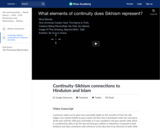
Exploring Sikhism's cultural and thematic connections to Hinduism and Islam.
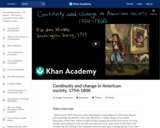
How revolutionary was the American Revolution? In this video, Kim models the historical thinking skill of continuity and change by comparing society before and after the Revolutionary War.

How much change did industrialization really bring during the Gilded Age? In this video, Kim discusses the impact of industrialization on work, migration patterns, and culture.
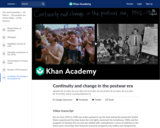
How much did the events of the tumultuous postwar era reshape American national identity? Kim discusses the extent to which developments like the Cold War, the Civil Rights Movement, Vietnam, and student protests of the 1960s changed core beliefs around citizenship, cultural values, and the proper US role in the world.
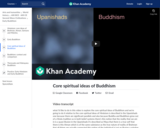
Core spiritual ideas of Buddhism by way of comparison with ideas from the Hindu Upanishads.